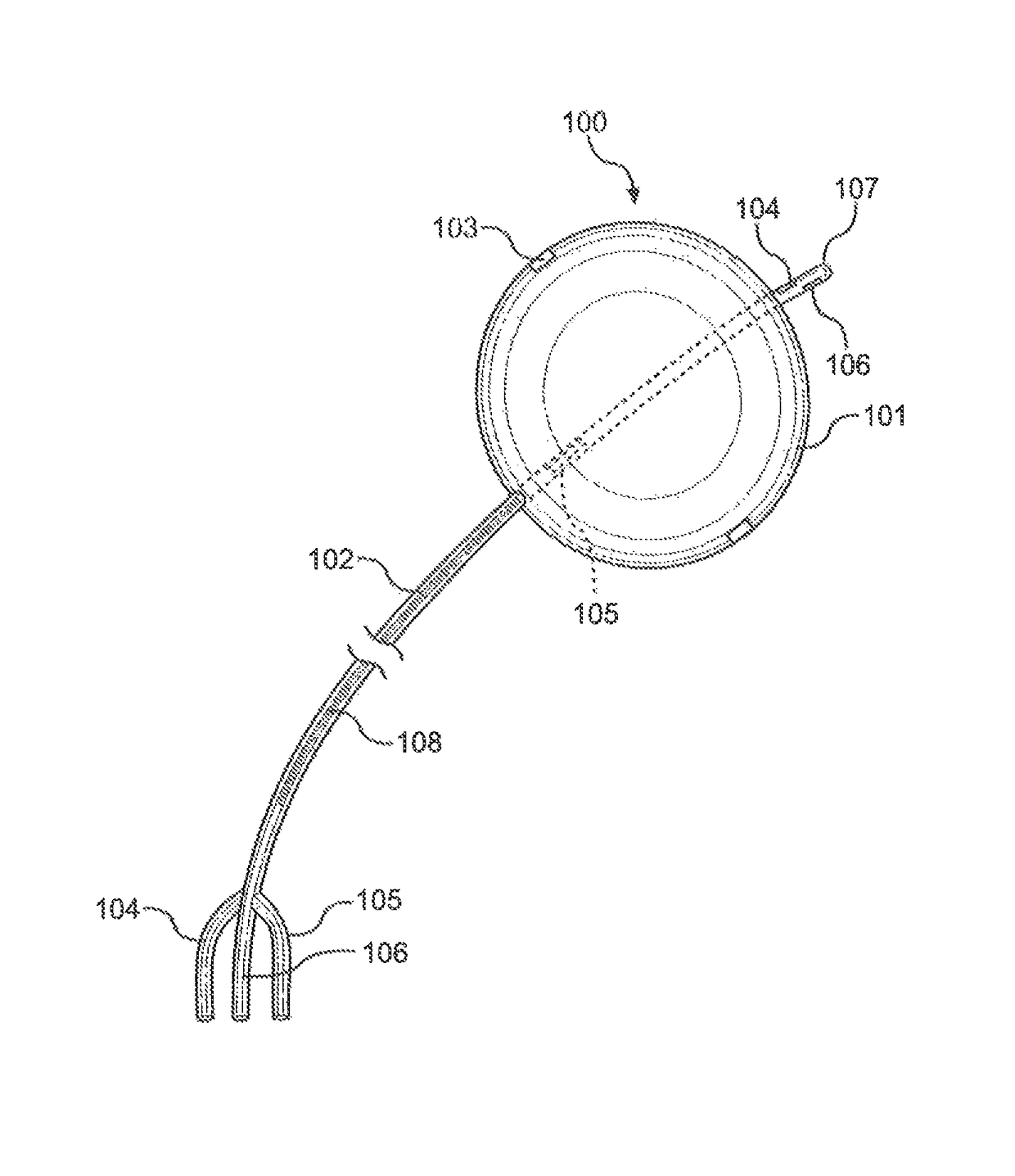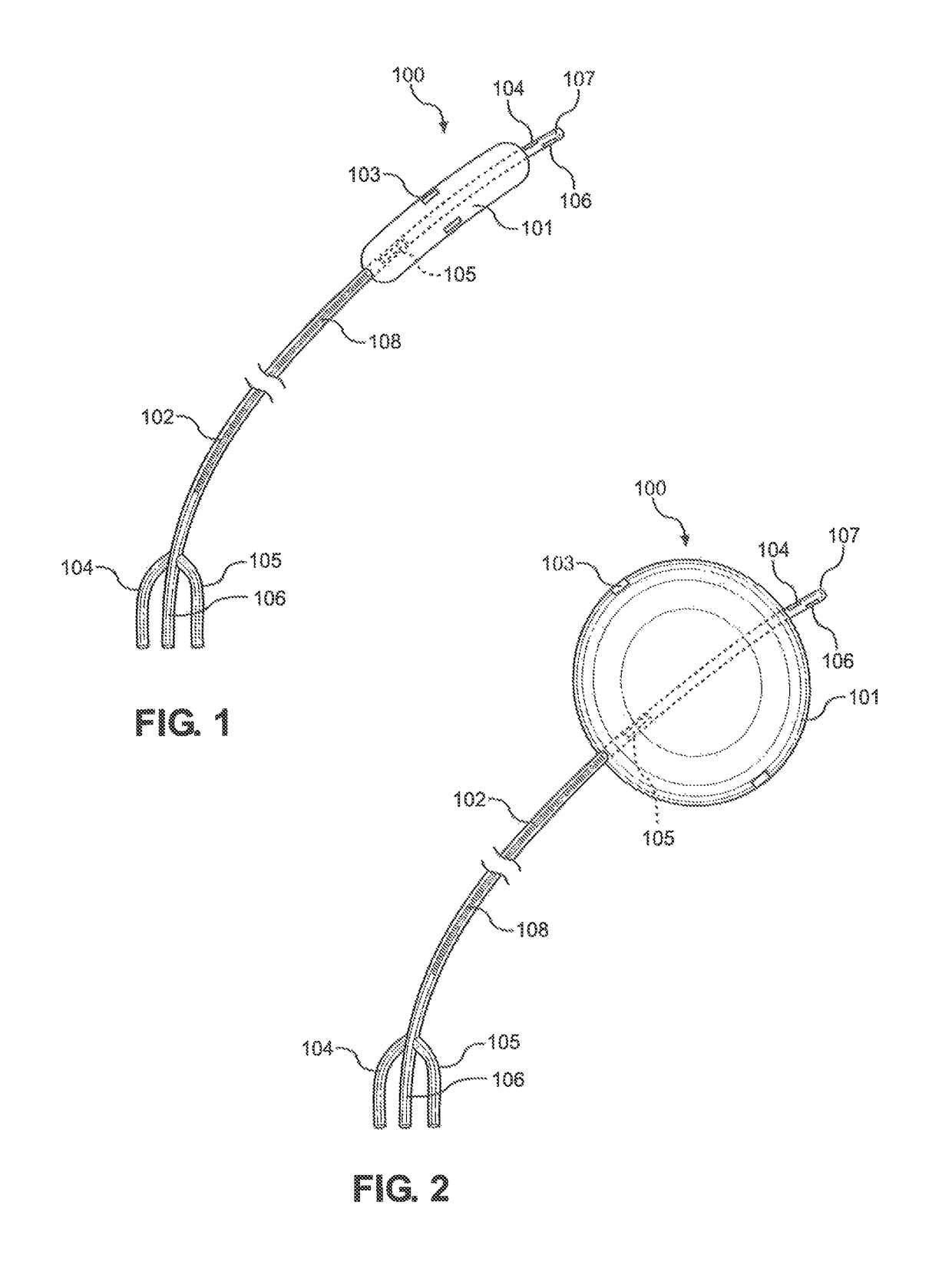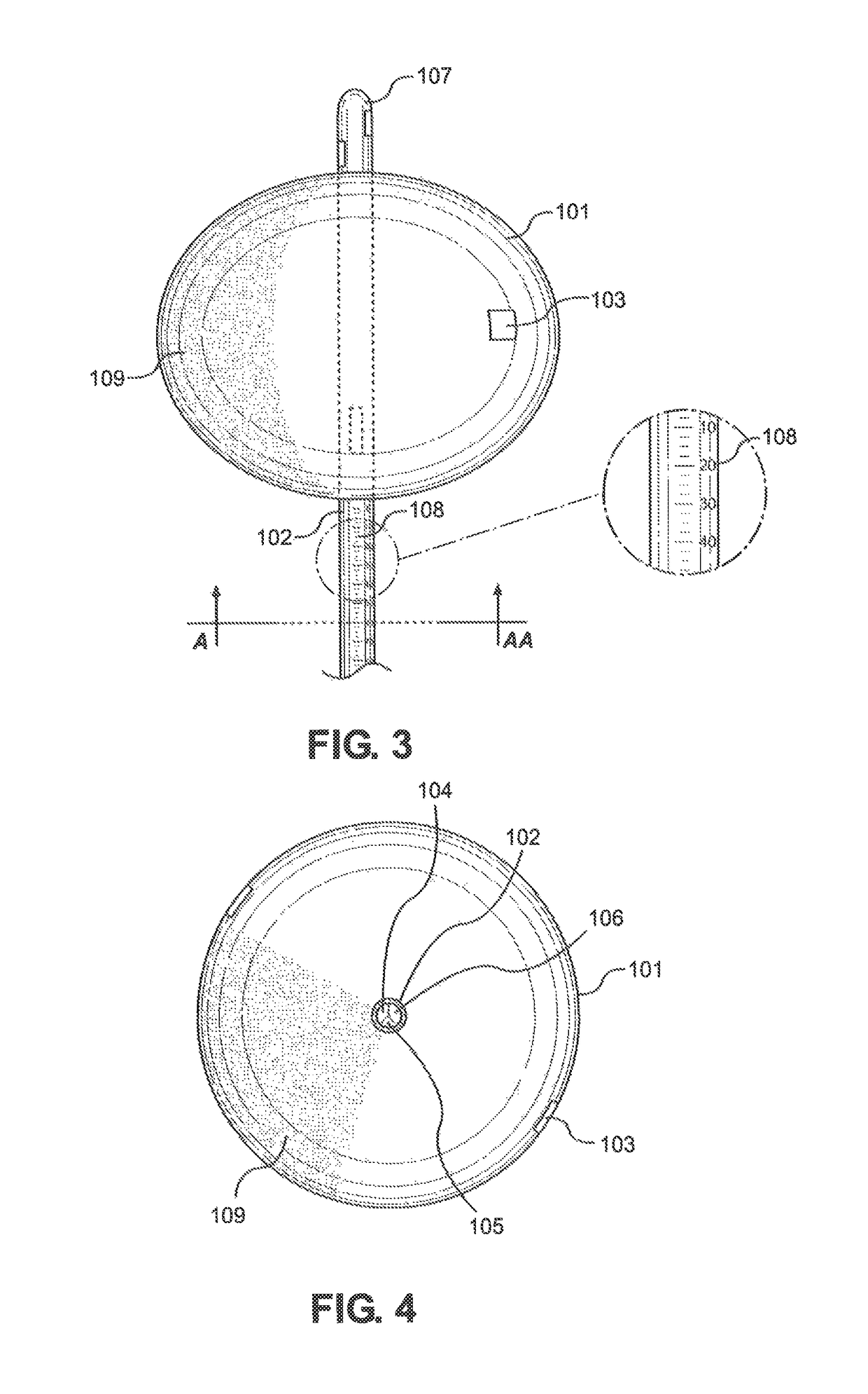Balloon immobilization device for radiation treatment
a radiation treatment and balloon technology, applied in the field of balloon immobilization device for radiation treatment, can solve the problems of difficult radiation therapy for bladder cancer patients, unreliable radiation treatment effect, and exposure of normal healthy organs to unnecessary radiation
- Summary
- Abstract
- Description
- Claims
- Application Information
AI Technical Summary
Benefits of technology
Problems solved by technology
Method used
Image
Examples
Embodiment Construction
[0047]Referring initially to FIG. 1, the preferred embodiment of the Balloon Immobilization Device for Radiation Treatment for bladder cancer of the present invention is shown and generally designated 100. The Balloon Immobilization Device for Radiation Treatment 100 consists of a flexible tube 102, a catheter tip 107, an inflatable balloon 101, and two radiopaque markers 103. The inflatable balloon 101 is made of an expandable membrane incorporated with slightly radiopaque materials. As shown, the inflatable balloon 101, when deflated, is oblong and thin enough to allow insertion into the urethra (not shown) or other orifices subsequently discussed.
[0048]The flexible tube 102 can be of any length depending on the use of the Balloon Immobilization Device for Radiation Treatment 100 of the present invention. Within the flexible tube 102 are three (3) separate lumina, first lumen 104, second lumen 105, and third lumen 106. The flexible tube 102 distally trifurcates into three (3) dist...
PUM
 Login to View More
Login to View More Abstract
Description
Claims
Application Information
 Login to View More
Login to View More - R&D
- Intellectual Property
- Life Sciences
- Materials
- Tech Scout
- Unparalleled Data Quality
- Higher Quality Content
- 60% Fewer Hallucinations
Browse by: Latest US Patents, China's latest patents, Technical Efficacy Thesaurus, Application Domain, Technology Topic, Popular Technical Reports.
© 2025 PatSnap. All rights reserved.Legal|Privacy policy|Modern Slavery Act Transparency Statement|Sitemap|About US| Contact US: help@patsnap.com



